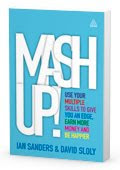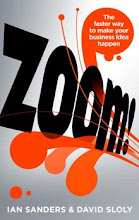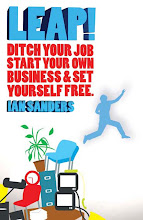One of the benefits of having a book published is the emails and tweets you get: people asking advice about their business idea and readers telling you how the book has inspired them to make their idea real. Hearing how my latest book ‘Zoom! The Faster Way To Make Your Business Idea Happen’ has inspired businesses to happen is the best feedback me and my co-author David can get. The latest example - a little t-shirt startup in Milwaukee, US: Enough Said Company, that launched last month. Co-founder interior designer Aga Artka already had the idea - it was reading ‘Zoom!’ that helped make it happen.
Here’s a quick Q&A on her entrepreneurial journey:
What role did Zoom play in your business idea coming to life?
I first read "Juggle! Rethink Work, Reclaim Your Life". I found it very energizing and reassuring in my "solo-prenuer" career choice. Then, I picked up "Zoom". It motivated me to act. On something. Anything. I always have a million and a half ideas in my head, pertaining to my interior design business, my husband's web development business and countless new ventures. Enough Said Company was just shaping up at that time, and I believe reading "Zoom" at the beginning of 2012, motivated me to push it and make the t-shirt idea a reality.
Where did the idea come from?
My friend and I decided to print two t-shirts that said "Interior Designers Have More Fun" and wear them to NeoCon, The International Contract Furniture Show in Chicago last June. What started as a fun thing, turned into a business idea. Attendees of the show liked our shirts so much that we couldn’t walk a 100 feet without being asked where we got them from.
How long did it take to go from idea to reality?
The idea was born in June 2011; our website went live in June 2012. We now have 5 t-shirts designs available, and ship throughout the US. International sales will be coming soon.
How easy did you find the journey to make it happen?
If you let "Zoom!" guide you through the process, it's really easy. First, you need an idea. Then, you need to get super excited about it. If you are not passionate about it, no-one else will be. I find trial and error method the most effective. Prepare yourself to fail a few times, and be open to the ever-evolving process of business growth. Nothing is final, nothing is forever. Plan as much as you need to, but don't overplan. Best innovators build a bridge from here to there, and walk on it at the same time. This approach takes more risk than building a bridge ahead of time, and then securely strolling across it. What's the fun in that?!
Where there any tools in Zoom that you used to make the business happen? If so, which ones?
Definitely, the idea shaping exercise in Chapter 6 (Free download of chapter HERE). I think I have read and answered these questions a hundred times by now. Every answer was slightly different but it helped me realize the best one. I loved the concept of boxing the idea to make sure we have everything we need to bring it to market.
Loads of people having ideas for businesses; few do anything about them. What was it about your attitude that made it a reality?
I'm a big idea person. Often times I get caught up in the grand scheme of things. But I'm also a doer. I can't stand still for too long. Having been self-employed for almost 4 years, I also learned to take advantage of opportunities as they come along. I am responsible for my own future, which means I have no-one else to blame for inaction, innovation's worst enemy.









